Abstract
Harrison, Arthur P., Jr. (Vanderbilt University, Nashville, Tenn.) and Felix R. Lawrence. Phenotypic, genotypic, and chemical changes in starving populations of Aerobacter aerogenes. J. Bacteriol. 85:742–750. 1963.—Cells harvested from postlogarithmic (maximal stationary phase) Aerobacter aerogenes cultures and starved in dilute sodium phosphate at 40 C remained viable for many hours. On the other hand, most cells from logarithmic-phase cultures succumbed, although a relatively small number remained viable. This viable segment of the original population thus responded like cells from postlog-phase cultures and, in fact, had properties in common with them. The residual segment was comprised of cells of two kinds. The first were mutants; when cultivated, harvested during log-phase growth, and again starved, they were resistant. The second were wild-type; they responded exactly as before. During starvation, the mutant is at an advantage because it has the ability to convert from susceptible log-phase physiology to resistant postlog-phase physiology more rapidly than can wild-type. The mutant differs from wild-type in yet other ways. It is smaller in size, slower in growth rate, lower in ribonucleic acid (RNA)-deoxyribonucleic acid ratio, greater in light-scattering ability, and, during the first 4 hr of starvation, it loses a higher proportion of its RNA. Selection of mutants of low growth rate between periods of active clonal growth indicates that evolutionary advantage may not necessarily be with the fast-growing members of the clone.
Full text
PDF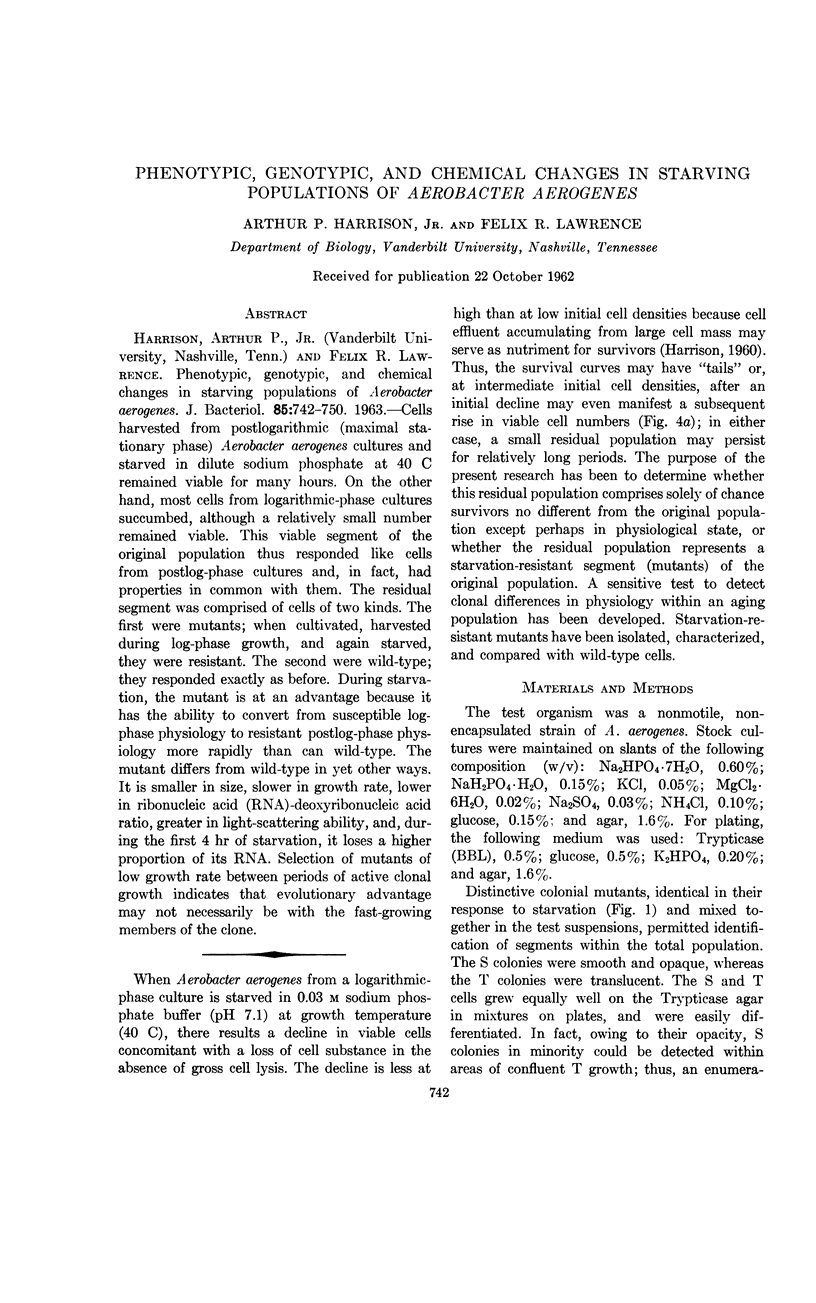
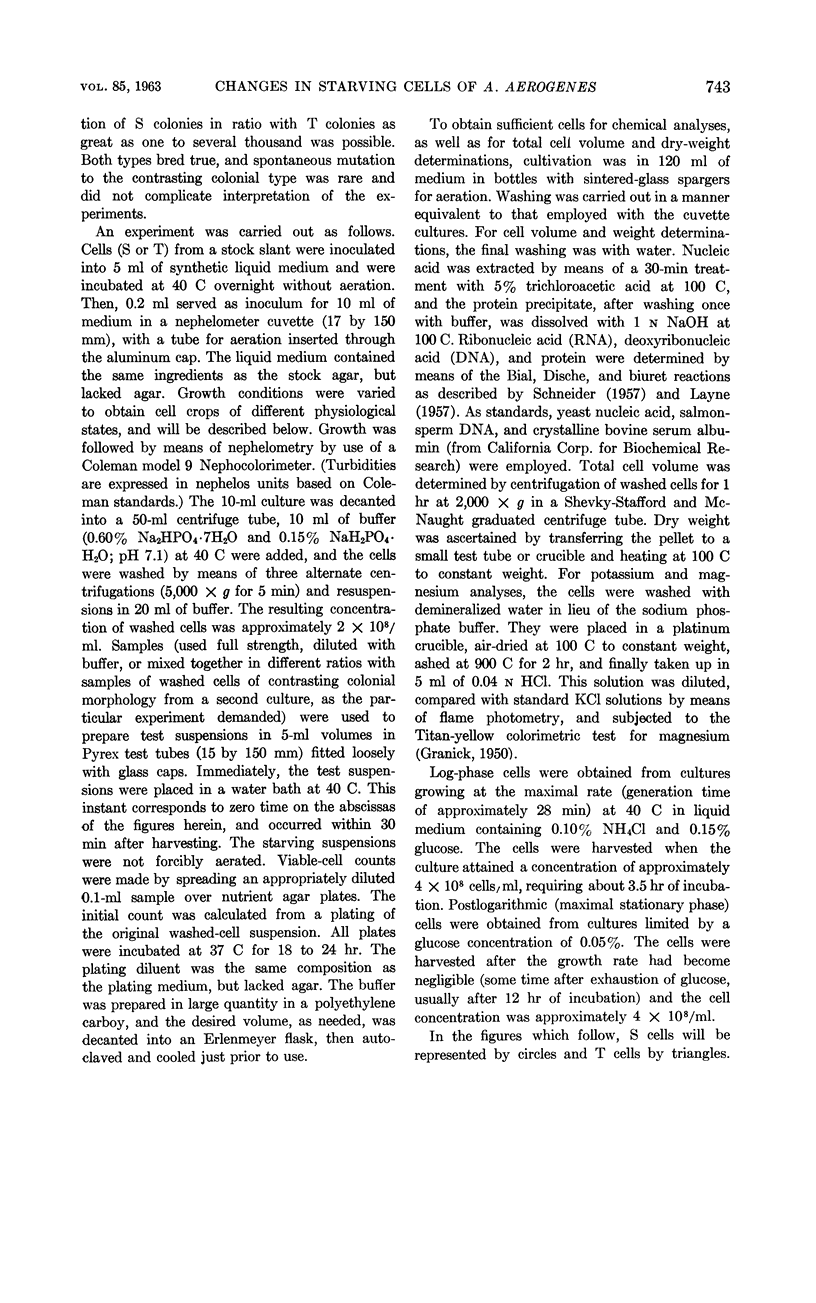
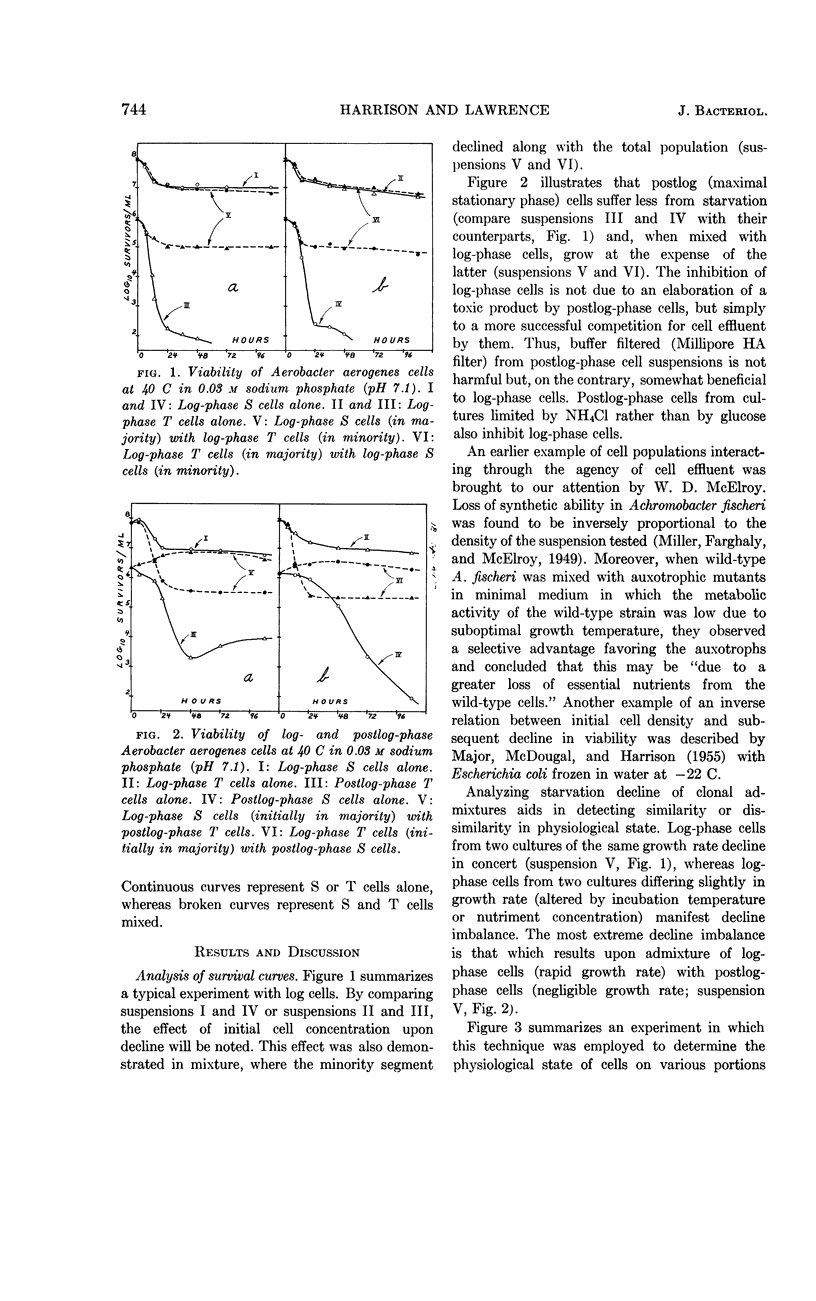
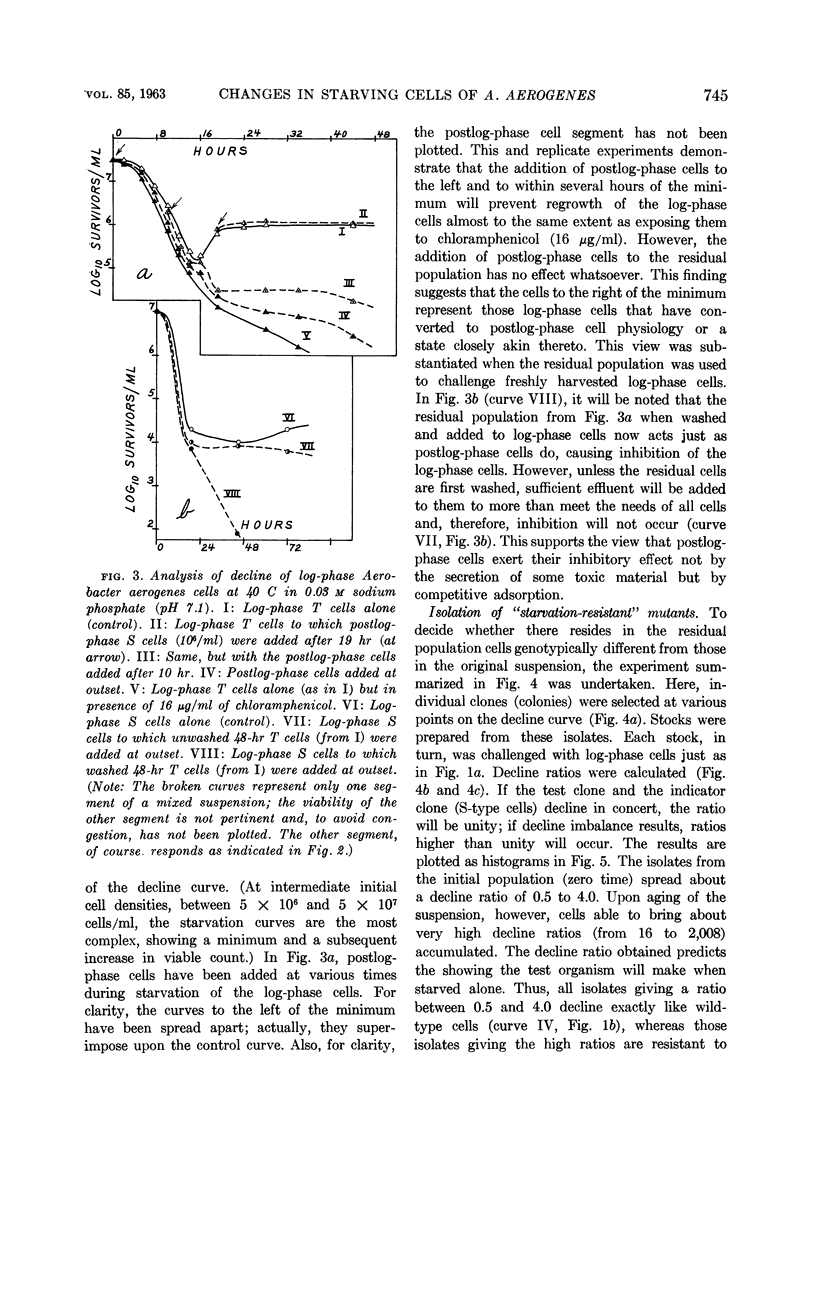
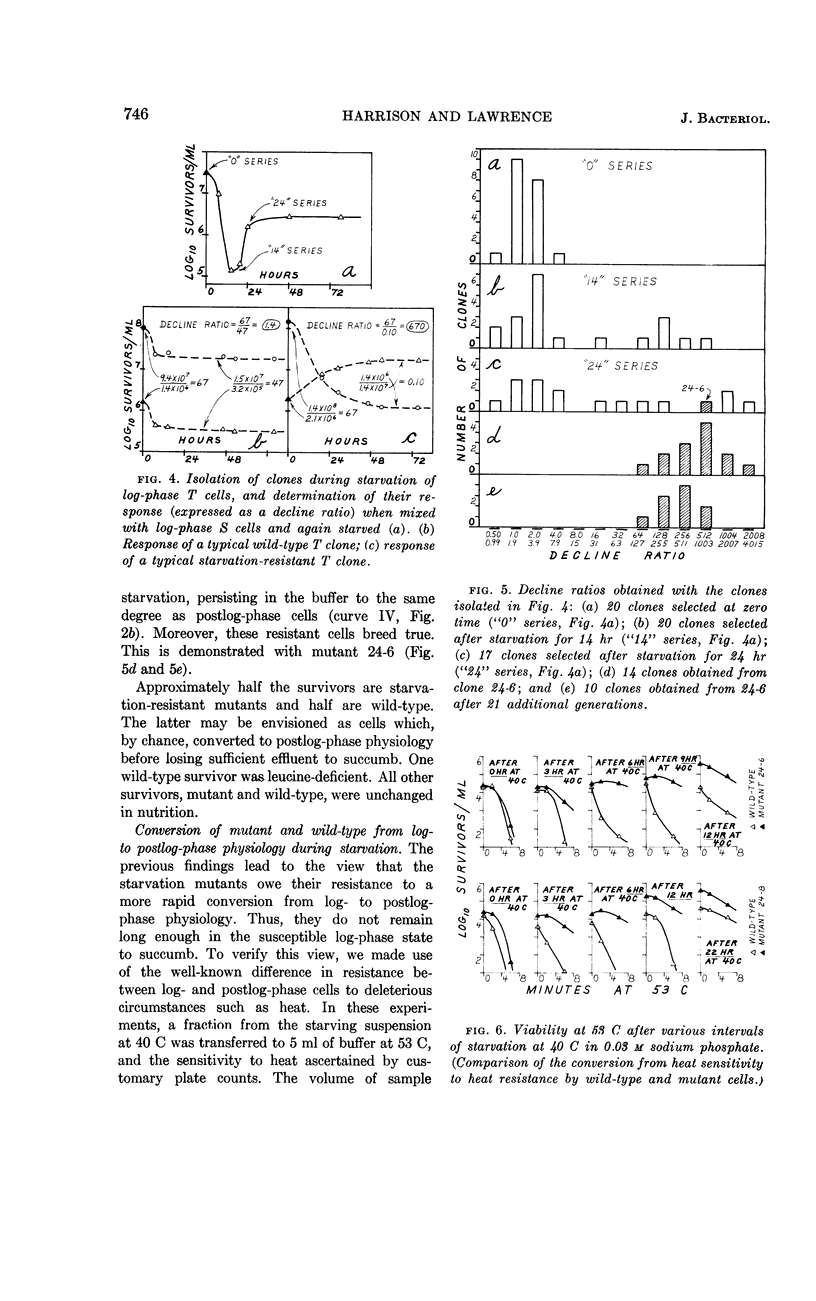
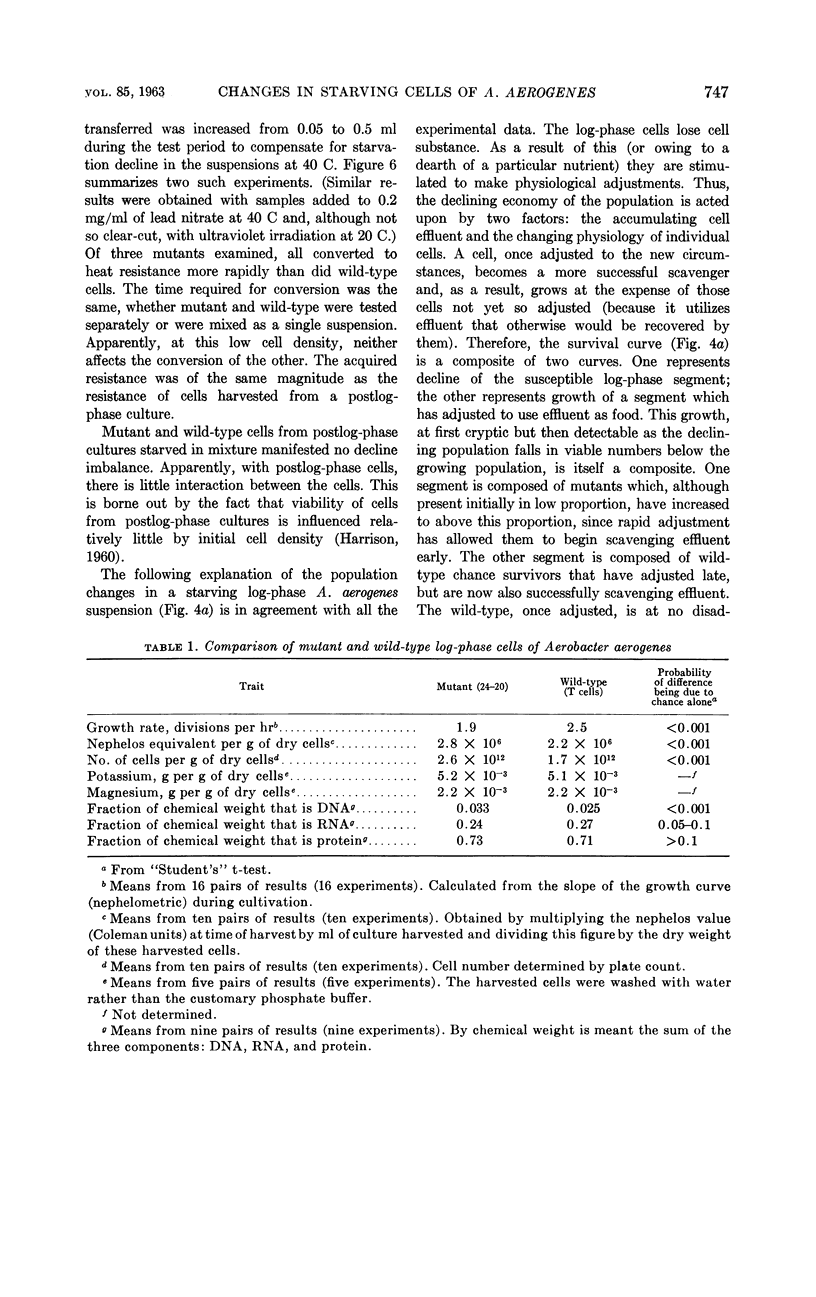
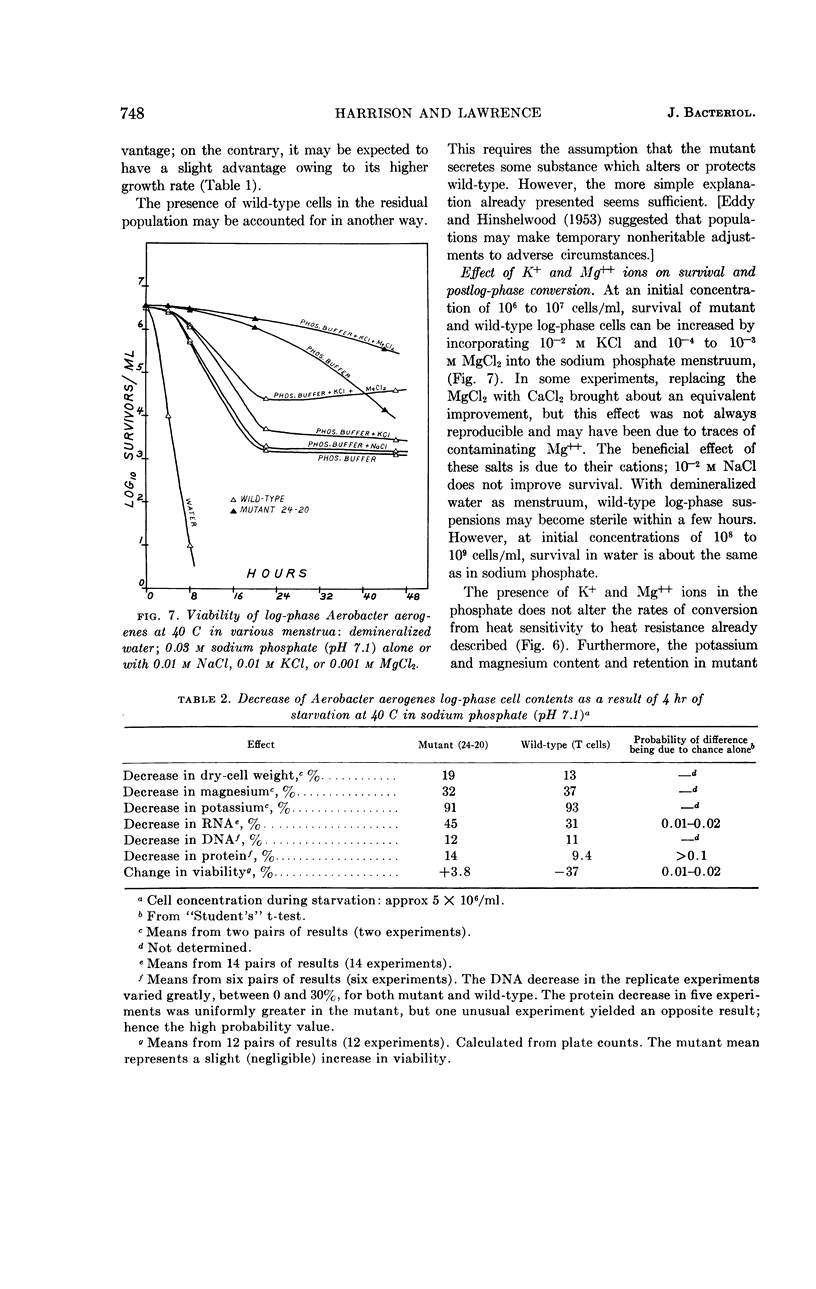
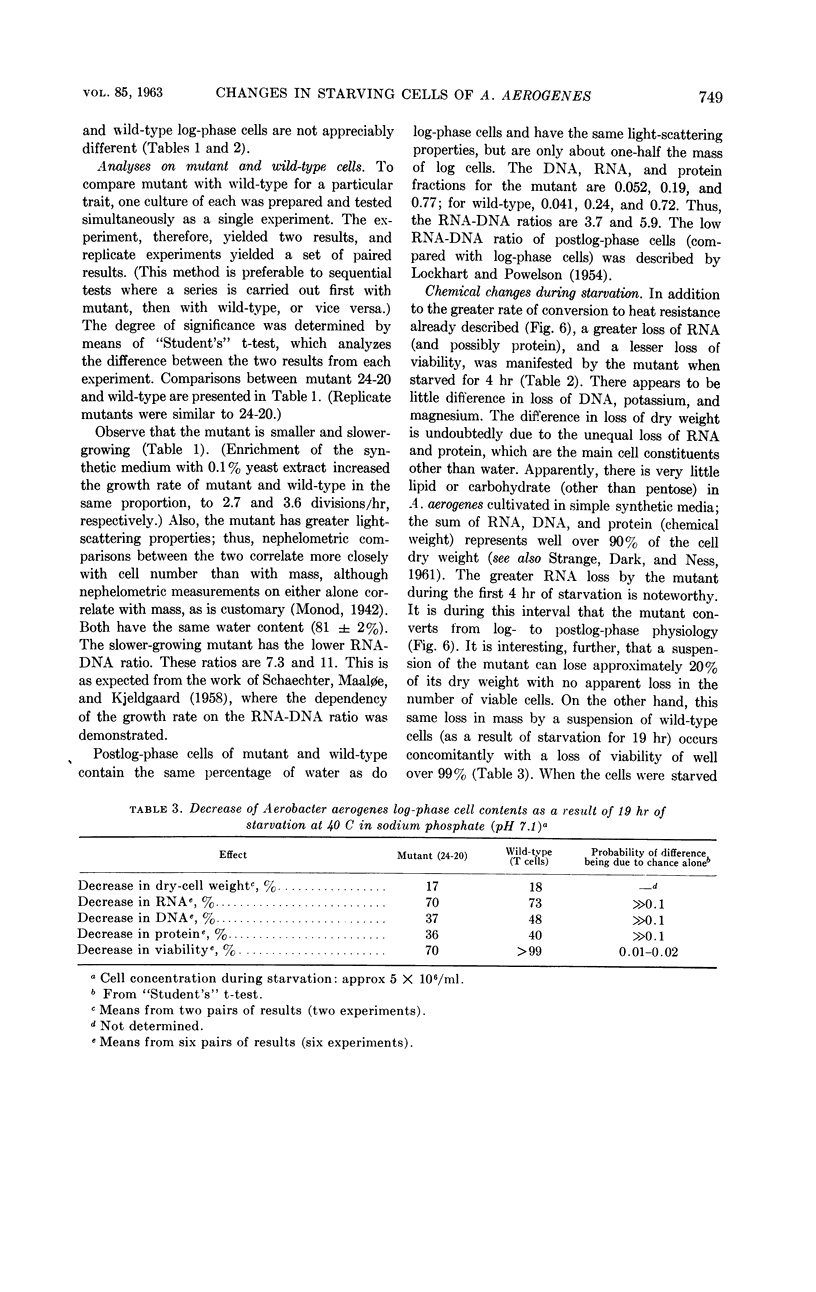
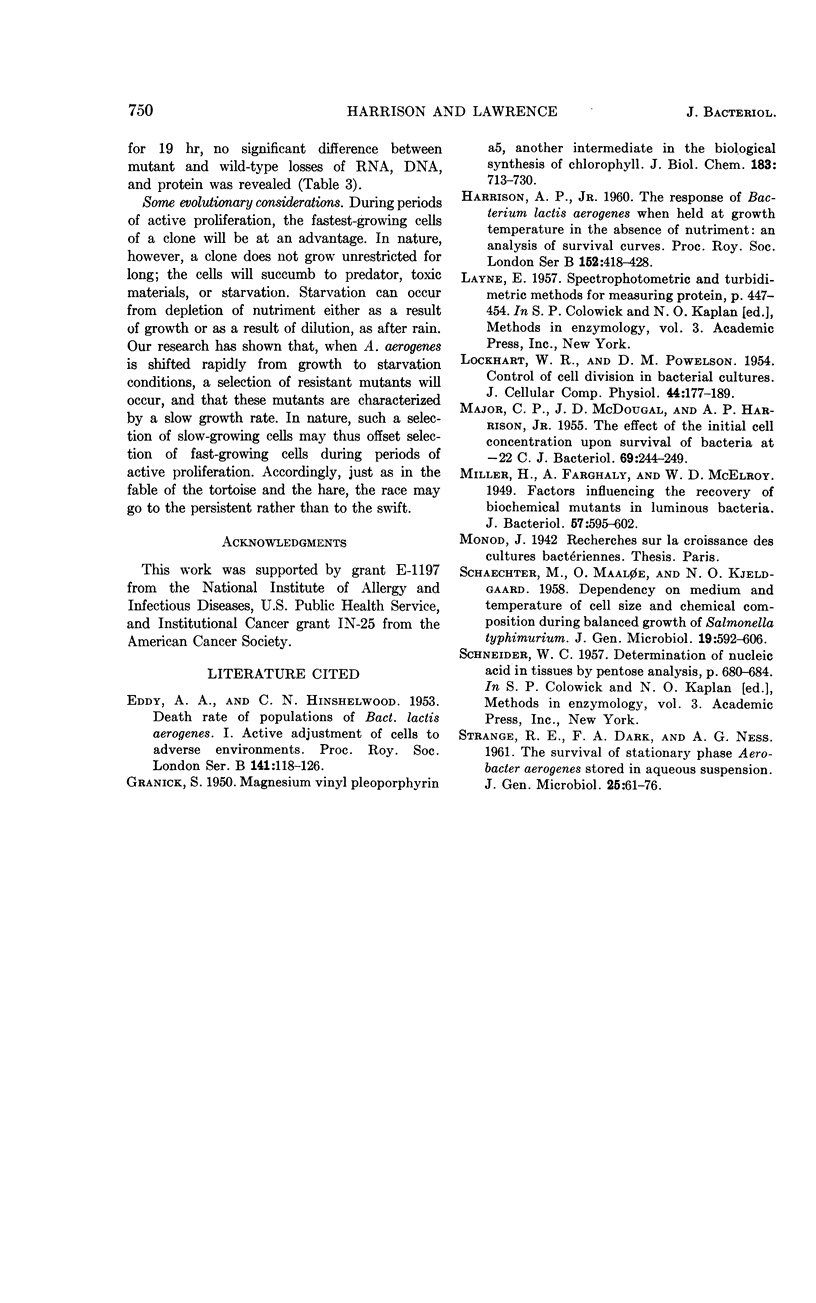
Selected References
These references are in PubMed. This may not be the complete list of references from this article.
- EDDY A. A., HINSHELWOOD C. Death rate of populations of Bact. lactis aerogenes. I. Active adjustment of cells to adverse environments. Proc R Soc Lond B Biol Sci. 1953 Mar 11;141(902):118–126. doi: 10.1098/rspb.1953.0028. [DOI] [PubMed] [Google Scholar]
- MAJOR C. P., McDOUGAL J. D., HARRISON A. P., Jr The effect of the initial cell concentration upon survival of bacteria at -22 C. J Bacteriol. 1955 Mar;69(3):244–249. doi: 10.1128/jb.69.3.244-249.1955. [DOI] [PMC free article] [PubMed] [Google Scholar]
- Miller H., Farghaly A. H., McElroy W. D. FACTORS INFLUENCING THE RECOVERY OF BIOCHEMICAL MUTANTS IN LUMINOUS BACTERIA. J Bacteriol. 1949 Jun;57(6):595–602. [PMC free article] [PubMed] [Google Scholar]


